Jason Salavon
Harnessing the Conditioning Sensorium for Improved Image Translation
Oct 13, 2021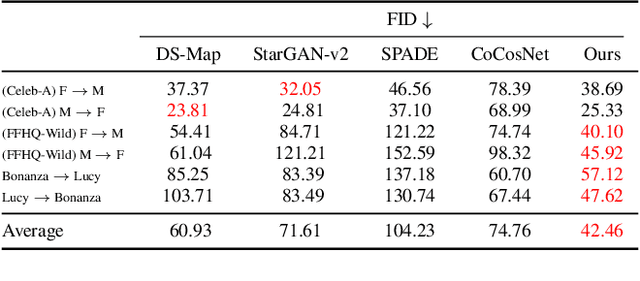
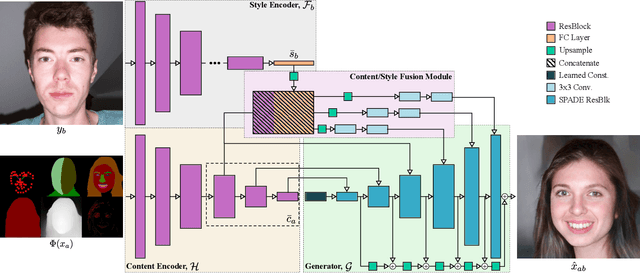
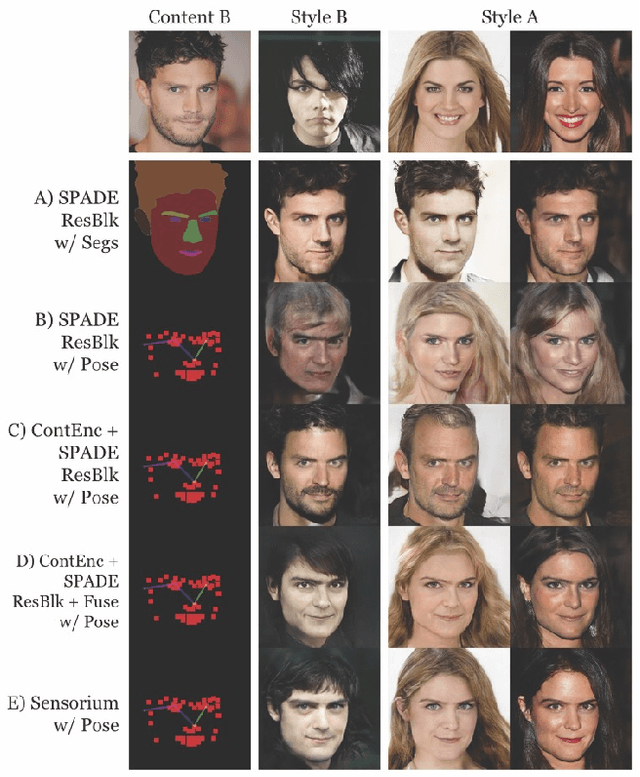
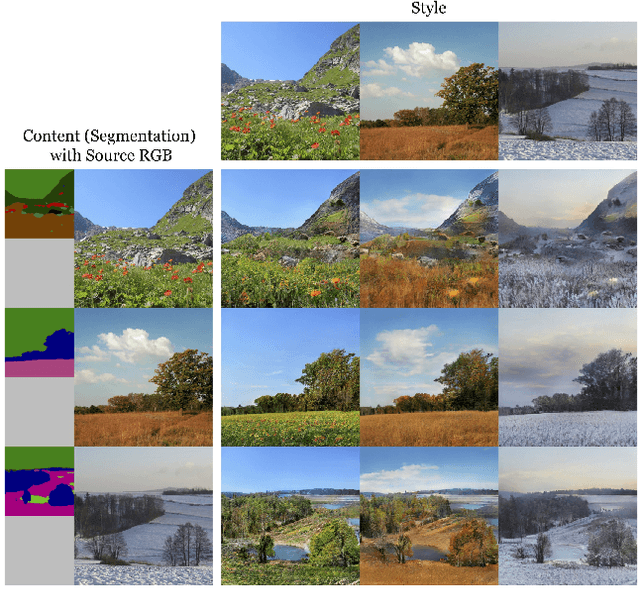
Abstract:Multi-modal domain translation typically refers to synthesizing a novel image that inherits certain localized attributes from a 'content' image (e.g. layout, semantics, or geometry), and inherits everything else (e.g. texture, lighting, sometimes even semantics) from a 'style' image. The dominant approach to this task is attempting to learn disentangled 'content' and 'style' representations from scratch. However, this is not only challenging, but ill-posed, as what users wish to preserve during translation varies depending on their goals. Motivated by this inherent ambiguity, we define 'content' based on conditioning information extracted by off-the-shelf pre-trained models. We then train our style extractor and image decoder with an easy to optimize set of reconstruction objectives. The wide variety of high-quality pre-trained models available and simple training procedure makes our approach straightforward to apply across numerous domains and definitions of 'content'. Additionally it offers intuitive control over which aspects of 'content' are preserved across domains. We evaluate our method on traditional, well-aligned, datasets such as CelebA-HQ, and propose two novel datasets for evaluation on more complex scenes: ClassicTV and FFHQ-Wild. Our approach, Sensorium, enables higher quality domain translation for more complex scenes.
Deformable Style Transfer
Mar 24, 2020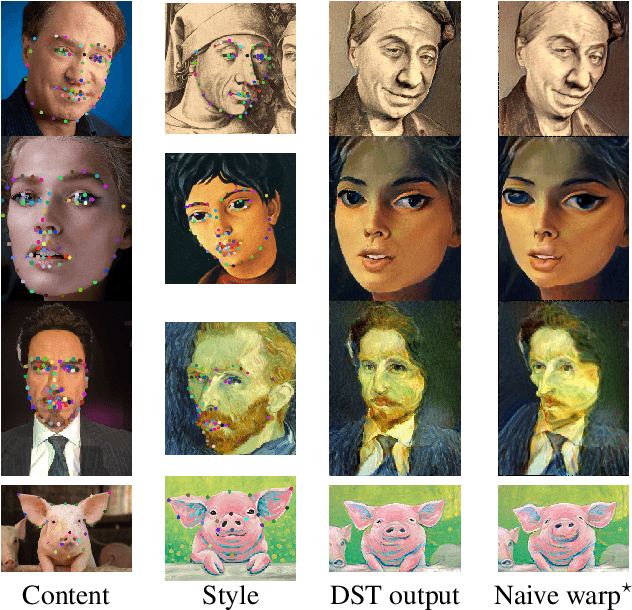
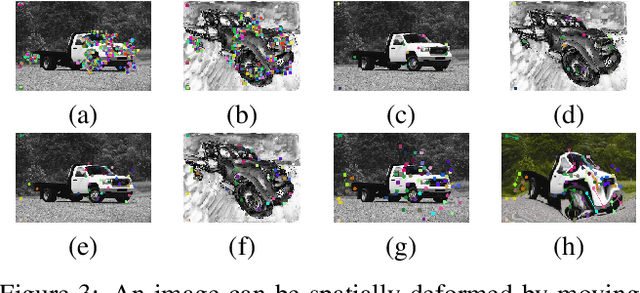
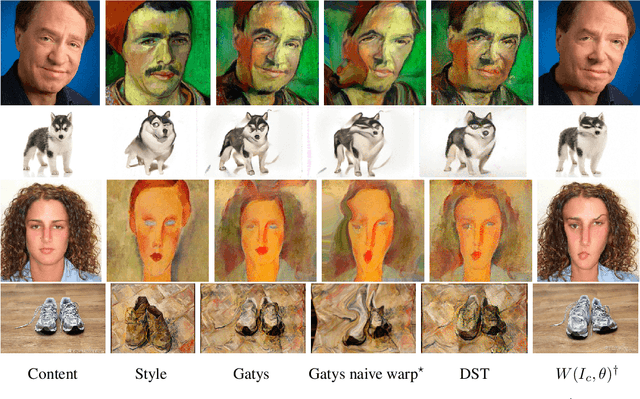
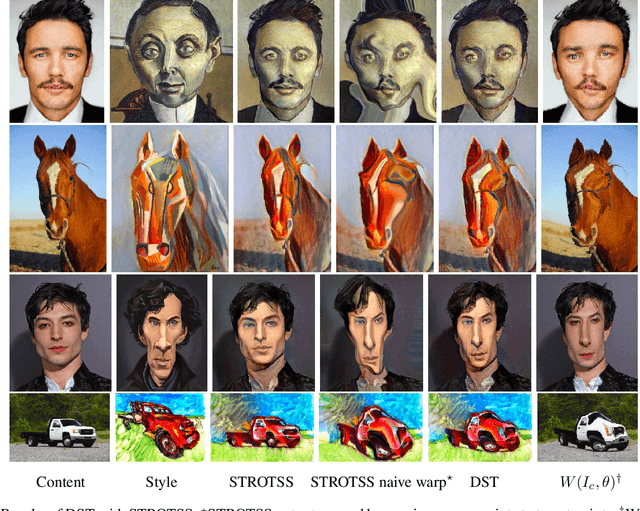
Abstract:Geometry and shape are fundamental aspects of visual style. Existing style transfer methods focus on texture-like components of style, ignoring geometry. We propose deformable style transfer (DST), an optimization-based approach that integrates texture and geometry style transfer. Our method is the first to allow geometry-aware stylization not restricted to any domain and not requiring training sets of matching style/content pairs. We demonstrate our method on a diverse set of content and style images including portraits, animals, objects, scenes, and paintings.
Style Transfer by Relaxed Optimal Transport and Self-Similarity
Apr 29, 2019



Abstract:Style transfer algorithms strive to render the content of one image using the style of another. We propose Style Transfer by Relaxed Optimal Transport and Self-Similarity (STROTSS), a new optimization-based style transfer algorithm. We extend our method to allow user-specified point-to-point or region-to-region control over visual similarity between the style image and the output. Such guidance can be used to either achieve a particular visual effect or correct errors made by unconstrained style transfer. In order to quantitatively compare our method to prior work, we conduct a large-scale user study designed to assess the style-content tradeoff across settings in style transfer algorithms. Our results indicate that for any desired level of content preservation, our method provides higher quality stylization than prior work. Code is available at https://github.com/nkolkin13/STROTSS
 Add to Chrome
Add to Chrome Add to Firefox
Add to Firefox Add to Edge
Add to Edge